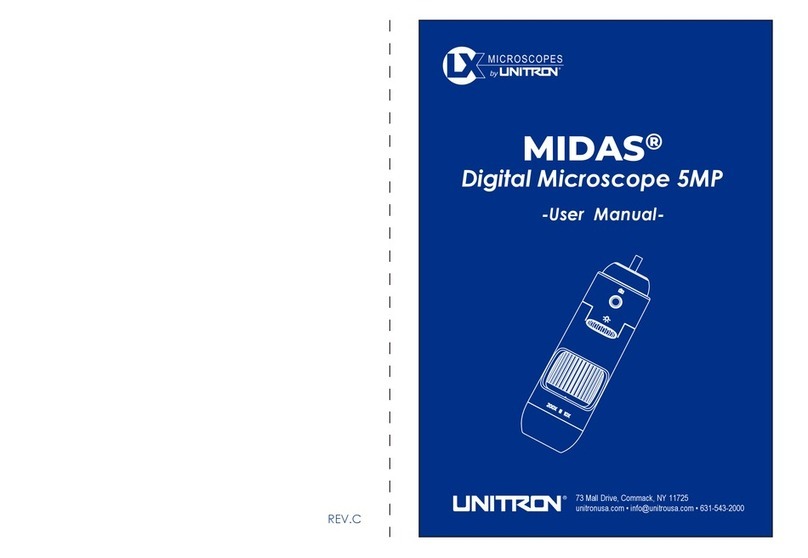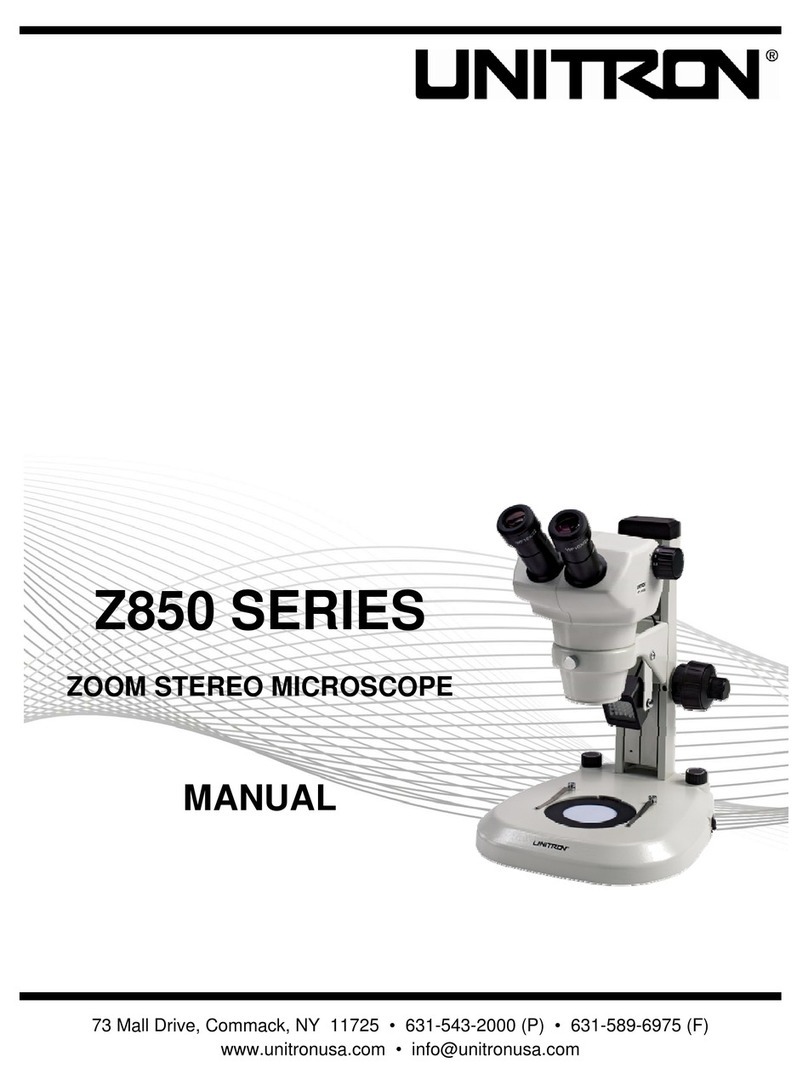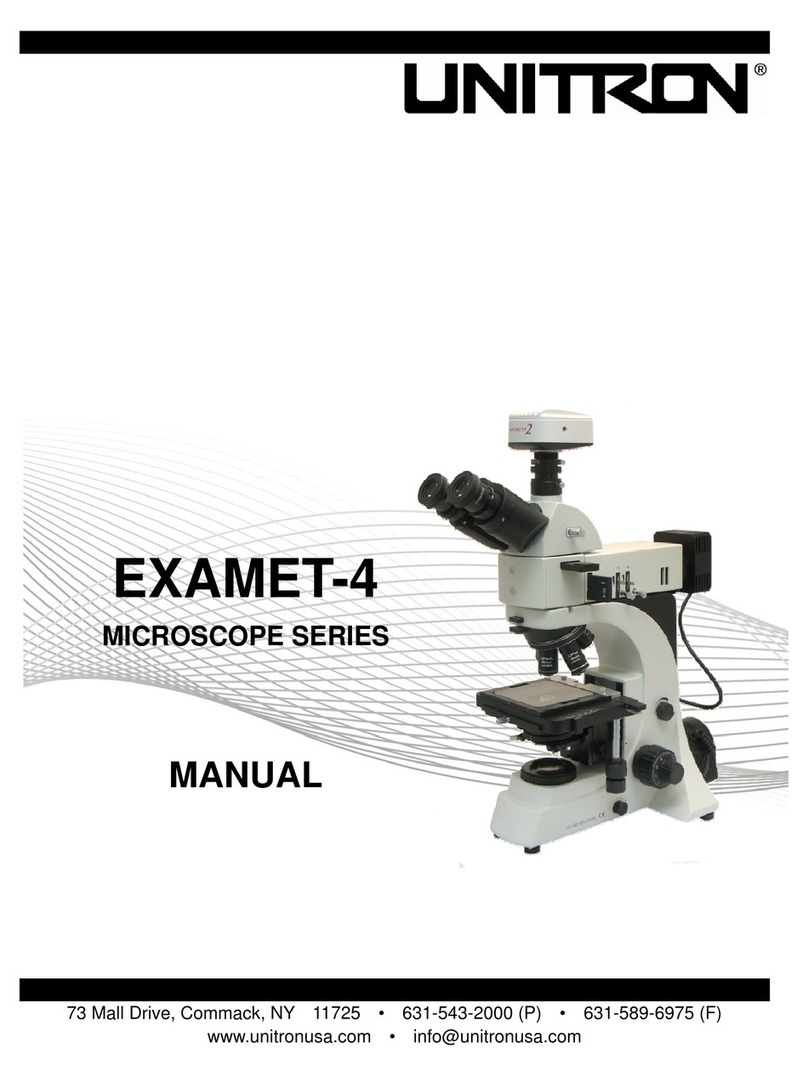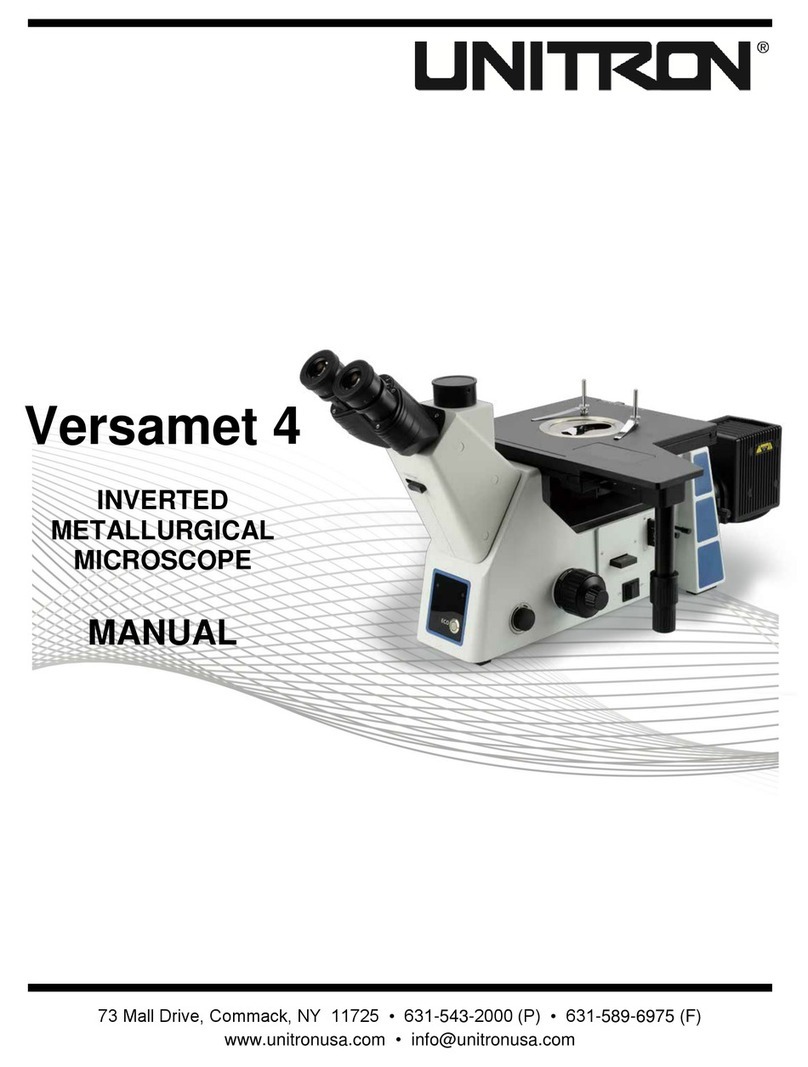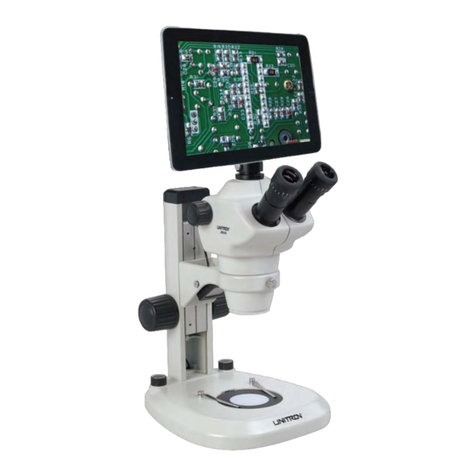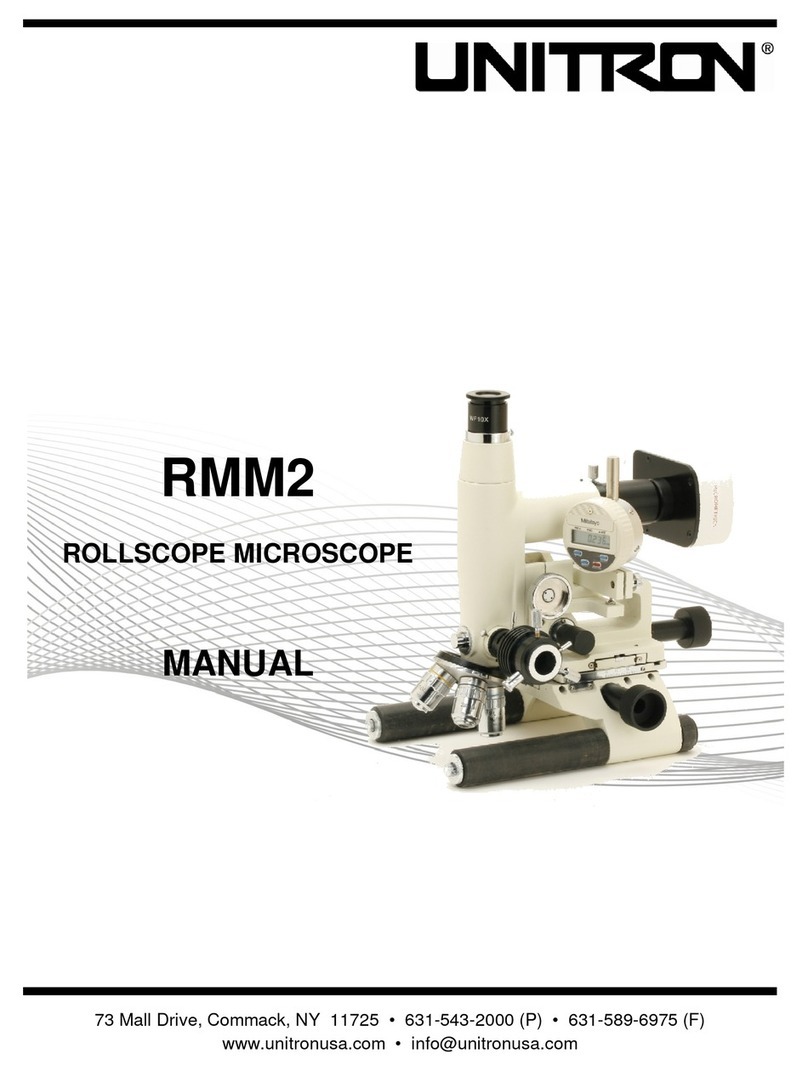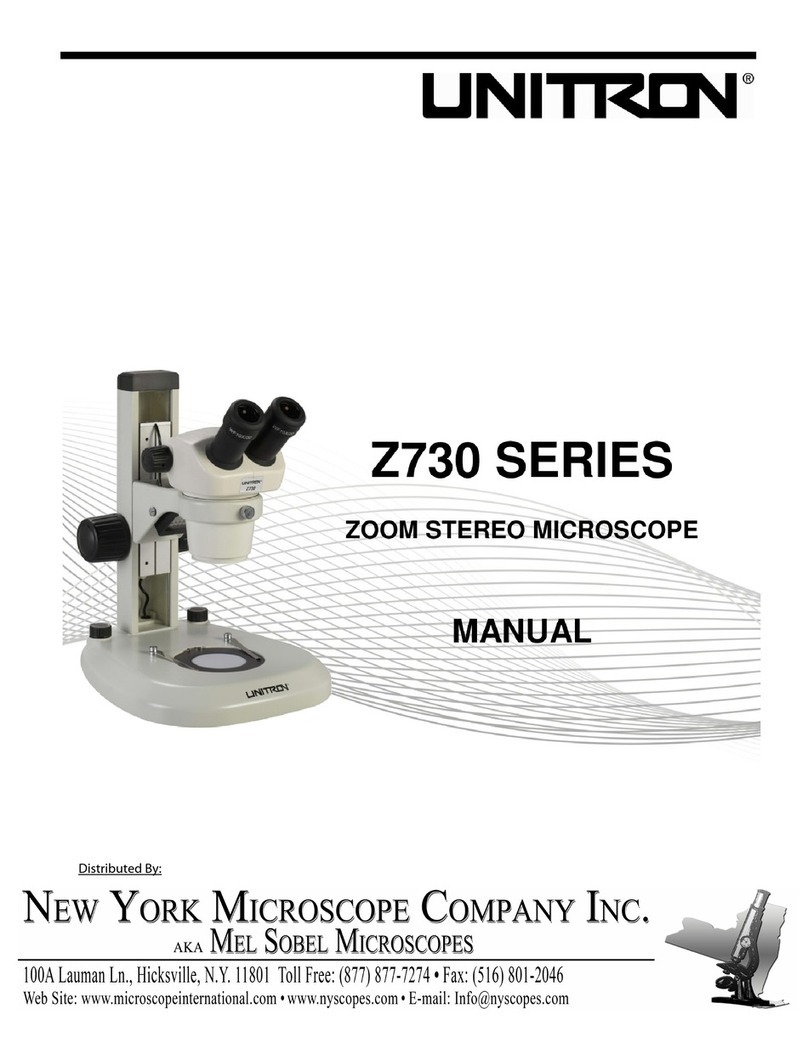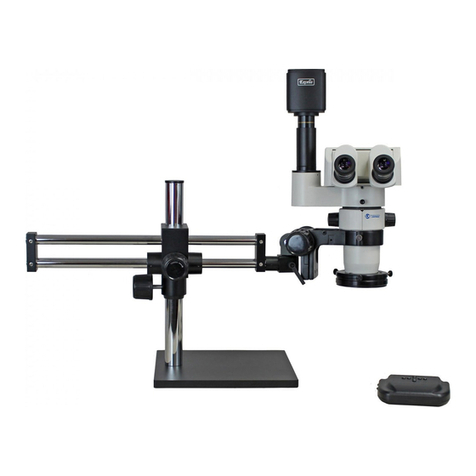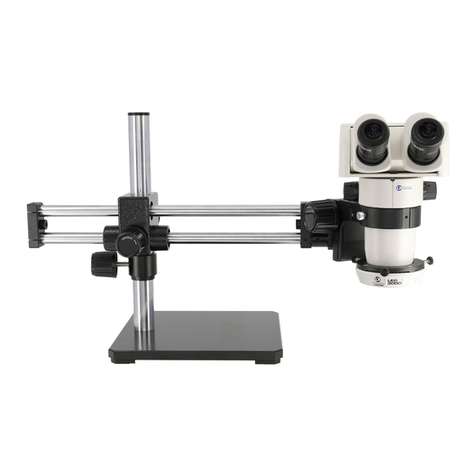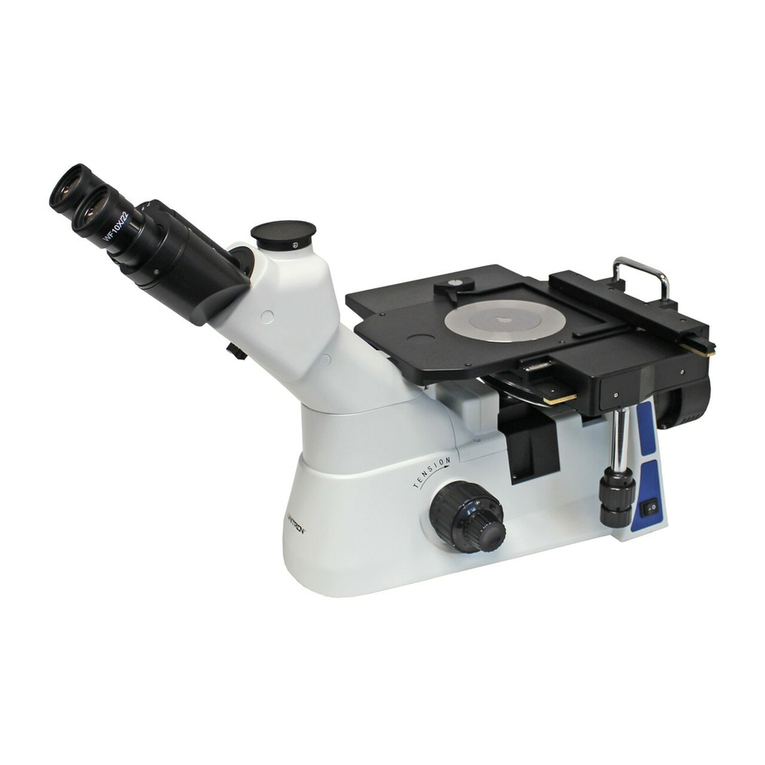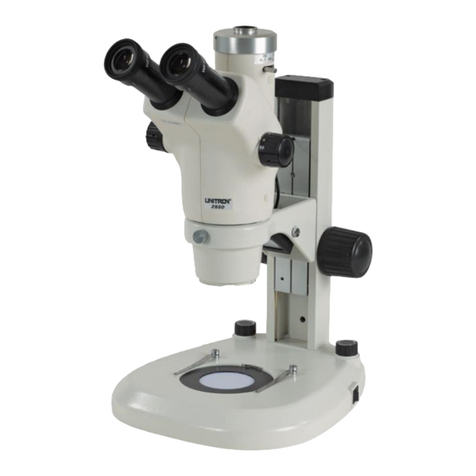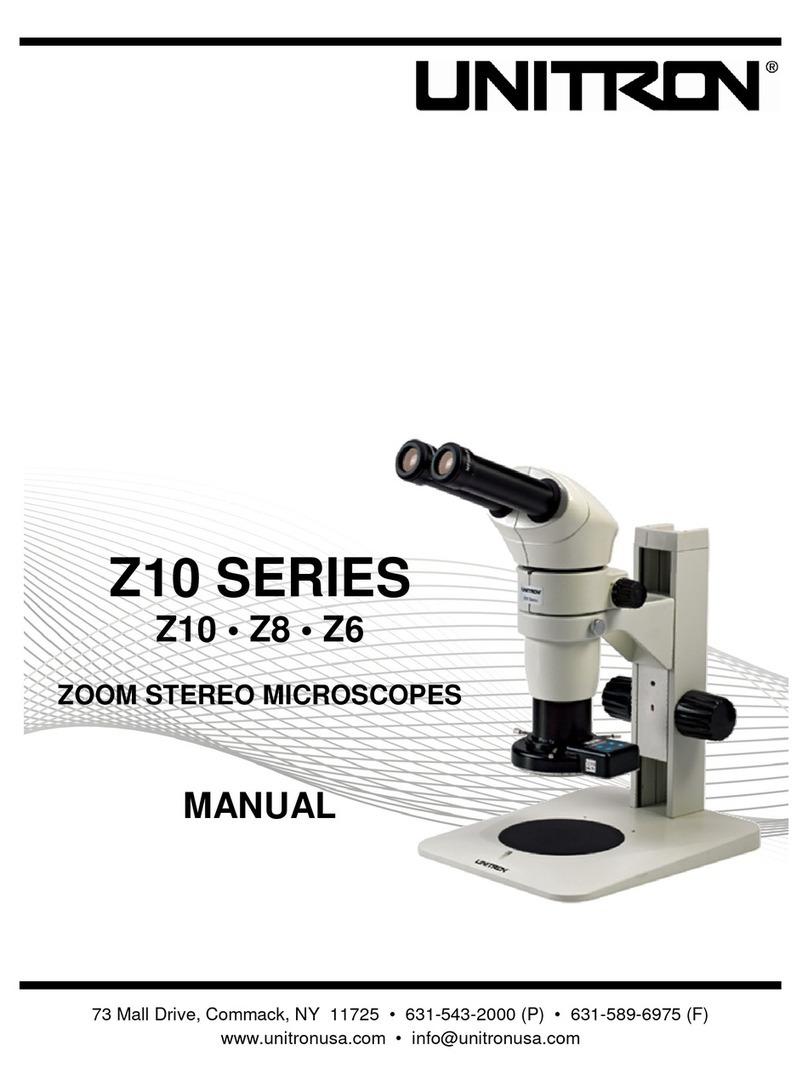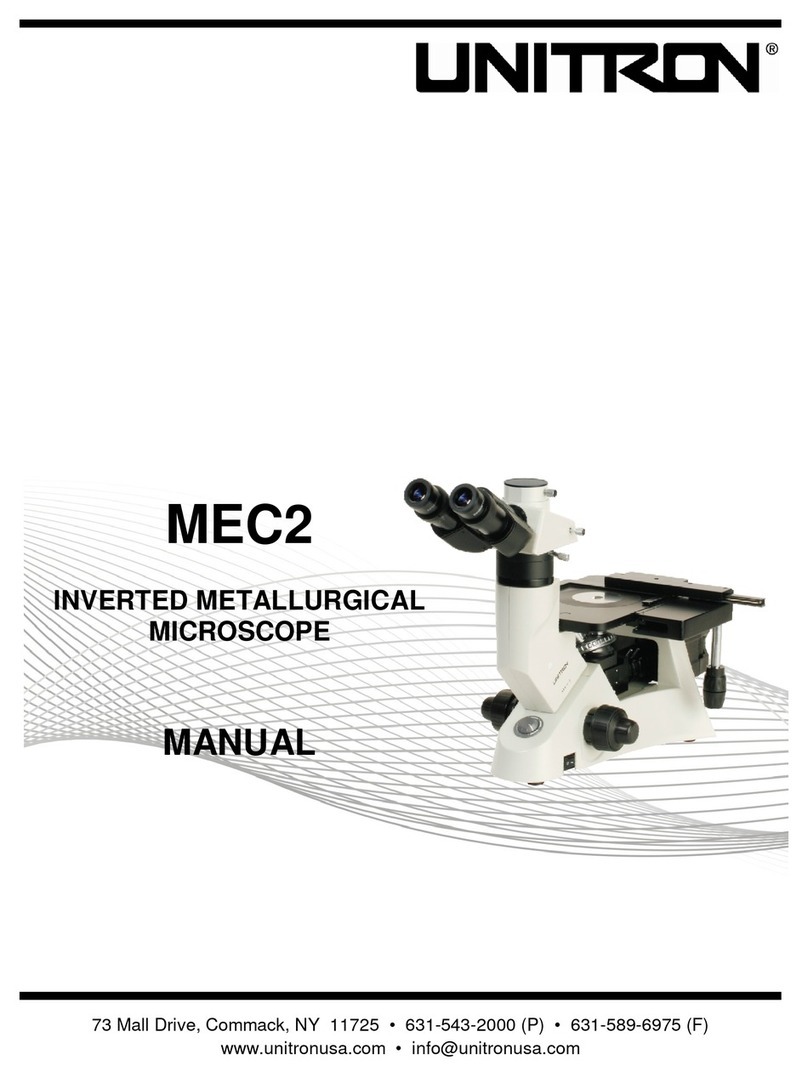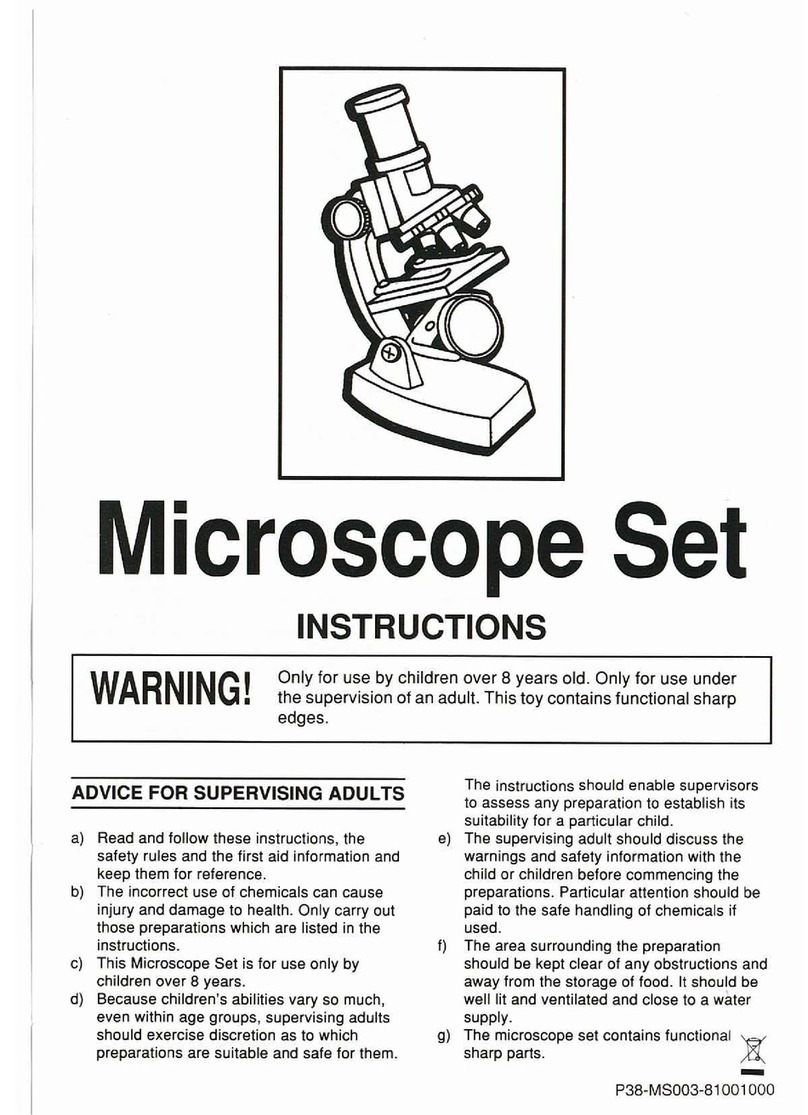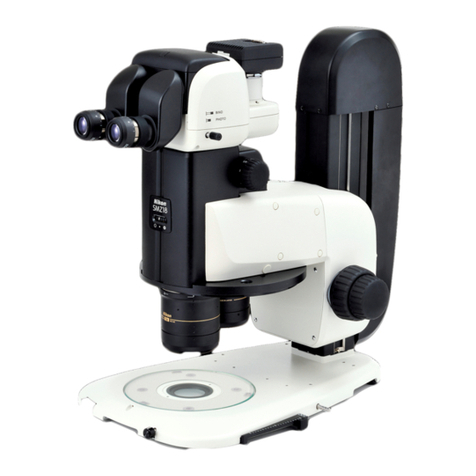
COMPARISON FORENSIC MICROSCOPE
UNITRON® 73 Mall Drive, Commack, NY 11725 • 631-543-2000 • www.unitronusa.com 3
SAFETY NOTES
1. Open the shipping carton carefully -- your microscope arrived packed in a molded shipping carton.
Do not discard the carton: the shipping carton should be retained for reshipment of your
microscope if needed.
2. Carefully remove the microscope from the shipping carton and place the microscope on a flat,
vibration-free surface.
3. Avoid placing the microscope in dusty surroundings, in high temperature or humid areas as mold and
mildew can form. Carefully remove the microscope from the shipping carton and place the
microscope on a flat, vibration-free surface.
4. Please check the complete microscope, spare parts and consumable parts according to the packing
list.
5. All electrical connectors (power cord) should be inserted into an electrical surge protector to prevent
damage due to voltage fluctuations.
NOTE: Always plug the microscope power cord into a suitable grounded electrical outlet. A
grounded 3-wire cord is provided.
CARE AND MAINTENANCE
1. Do not attempt to disassemble any component including eyepieces, objectives or the focusing
assembly.
2. Keep the instrument clean; remove dirt and debris regularly. Accumulated dirt on metal surfaces
should be cleaned with a damp cloth. More persistent dirt should be removed using a mild soap
solution. Do not use organic solvents for cleansing.
3. The outer surface of the optics should be inspected and cleaned periodically using an air bulb. If dirt
remains on the optical surface, use a soft, lint free cloth or cotton swab dampened with a lens
cleaning solution (available at camera stores). All optical lenses should be swabbed using a circular
motion. A small amount of absorbent cotton wound on the end of a tapered stick makes a useful tool
for cleaning recessed optical surfaces. Avoid using an excessive amount of solvent as this may
cause problems with optical coatings or cemented optics or the flowing solvent may pick up grease
making cleaning more difficult.
4. Store the instrument in a cool, dry environment. Cover the microscope with a dust cover when not in
use.
5. UNITRON®microscopes are precision instruments which require periodic servicing to maintain
proper performance and to compensate for normal wear. A regular schedule of preventative
maintenance by qualified service personnel is highly recommended. Your authorized UNITRON
distributor can arrange for this service.
